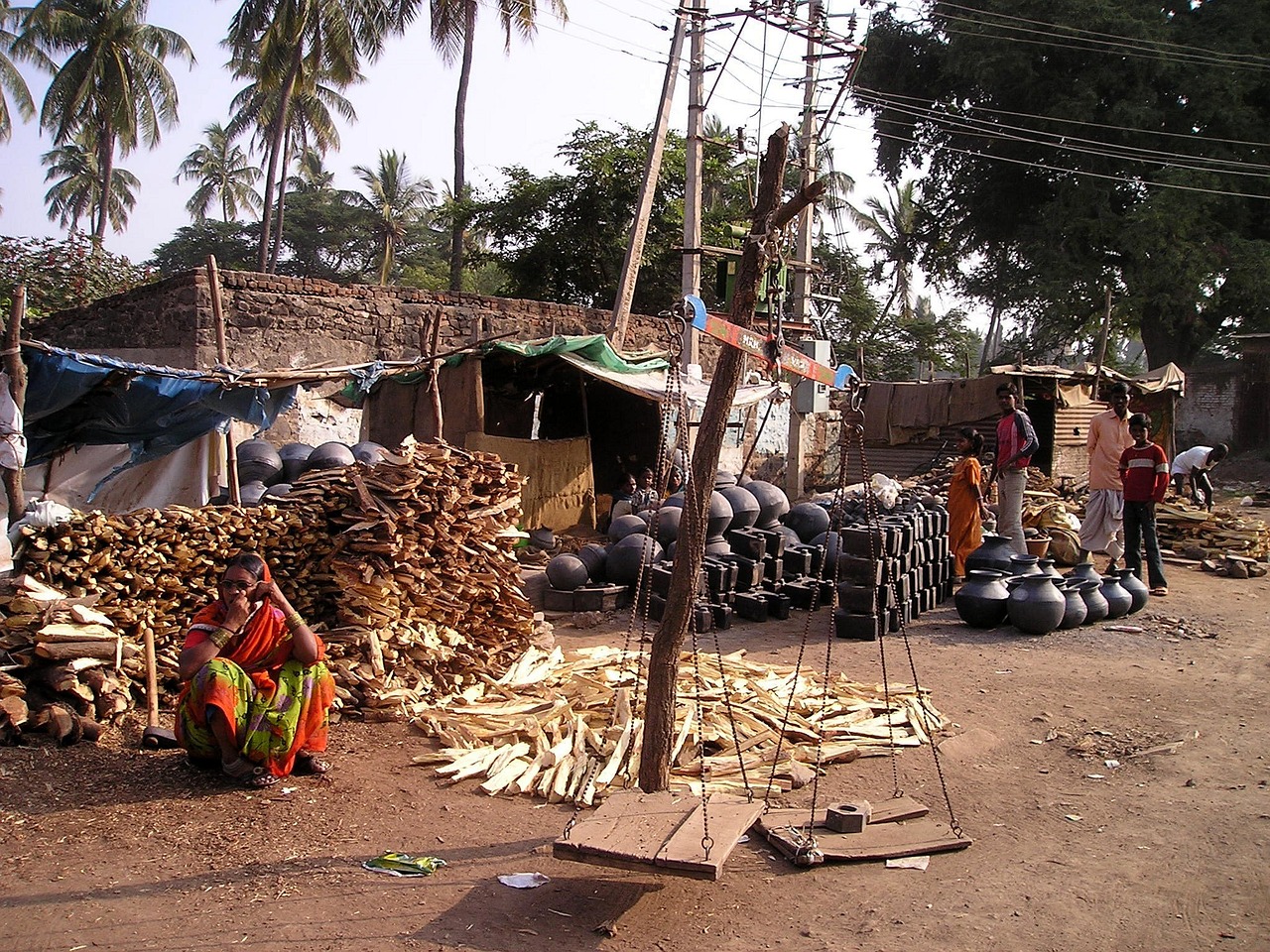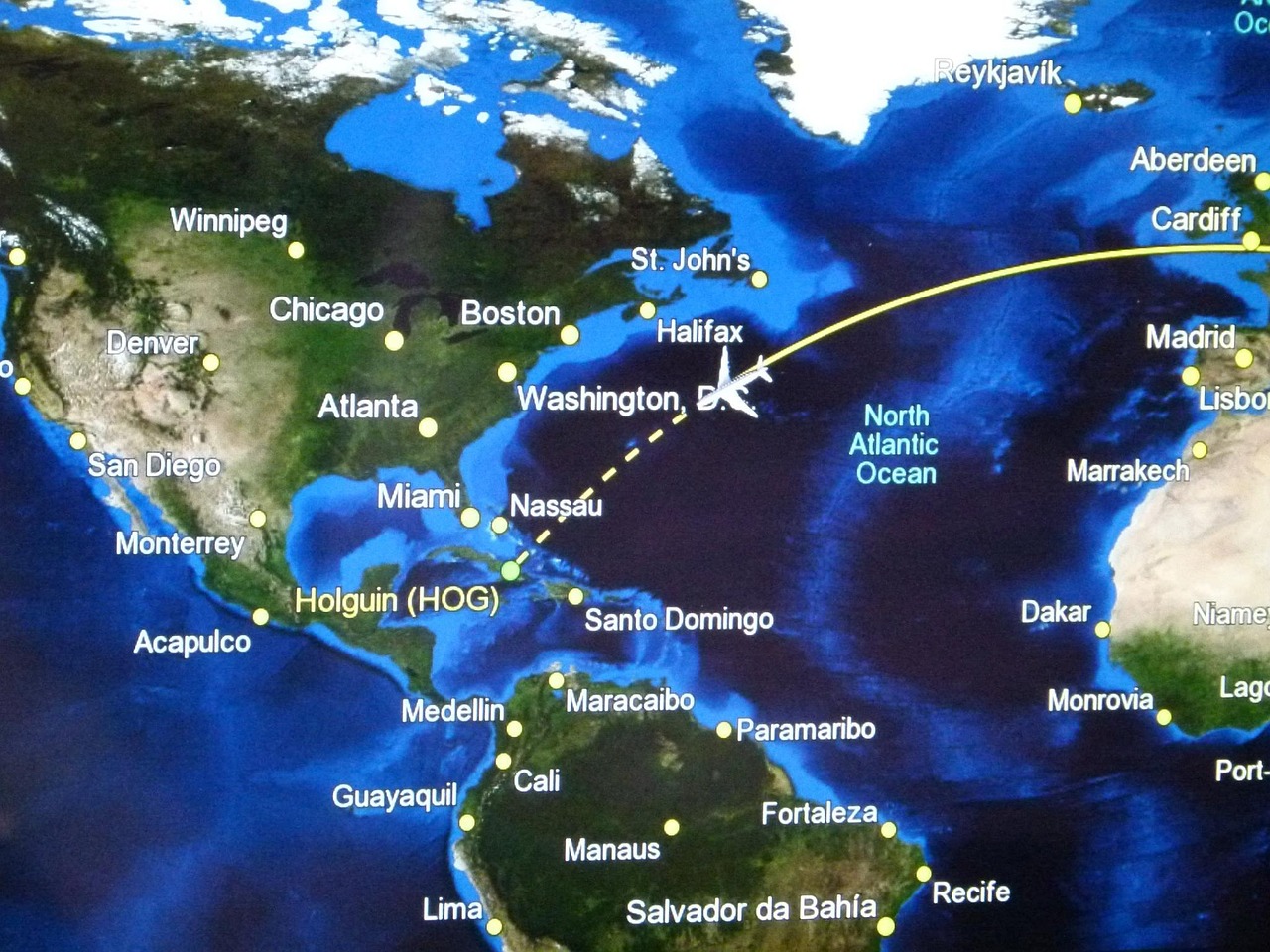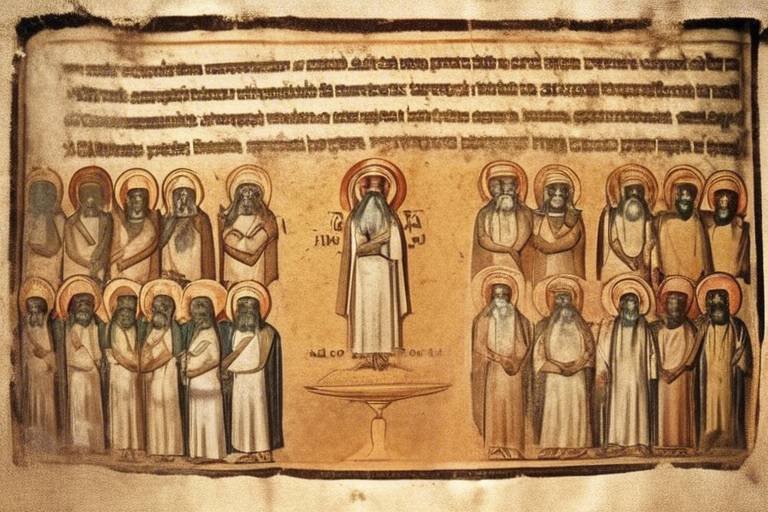Ancient Trade Routes and Their Impact on Civilization
Exploring the historical significance of ancient trade routes in shaping civilizations, fostering cultural exchange, and driving economic growth is like embarking on a journey through time. These ancient pathways, like veins connecting distant lands, pulsated with the flow of goods, ideas, and cultures, leaving an indelible mark on the tapestry of human history.
The Silk Road stands as a testament to the power of trade in shaping the world. Stretching from the heart of China to the shores of the Mediterranean, this legendary route was a bustling thoroughfare of silk, spices, and other exotic treasures. It served as a bridge between East and West, fostering a vibrant exchange of goods and knowledge that enriched the development of civilizations along its path.
Traversing the vast expanses of the Sahara Desert, the Trans-Saharan Trade Route was a lifeline connecting North Africa to the lands of West Africa. Caravans laden with salt, gold, and even slaves navigated the harsh terrain, forging economic ties and cultural exchanges that left an enduring impact on the region's history.
The Indian Ocean Trade Network, with its vast expanse linking East Africa, the Middle East, India, and Southeast Asia, was a maritime marvel that facilitated the exchange of goods, ideas, and cultures. The gentle lapping of waves carried with it the echoes of diverse languages, religions, and traditions, shaping the identities of coastal communities and beyond.
Traveling along the Amber Road, one could witness the glittering trade of amber, salt, and other commodities that flowed between the Baltic Sea and the Mediterranean. This ancient route was a conduit of economic prosperity and cultural exchange, where the amber's golden glow illuminated the path to shared prosperity and mutual understanding.
The Incense Route, winding its way from the Arabian Peninsula to the shores of the Mediterranean, was perfumed with the scents of aromatic resins and spices. This fragrant trail of trade not only enriched the economies of the ancient Near East and Mediterranean regions but also infused their cultures with exotic flavors and fragrances.
Among the rugged terrain of Southwest China, the Tea Horse Road meandered, carrying the precious cargo of tea and horses between Tibet and China. This network of ancient trade routes was not just a conduit for goods but a pathway for the exchange of traditions, customs, and beliefs, shaping the vibrant tapestry of the region's cultural landscape.
The Amarna Letters, a collection of diplomatic correspondence between ancient Egypt and other powers of the Near East, offer a glimpse into the intricate web of trade relationships, alliances, and political dynamics that defined the ancient world. These ancient missives reveal the delicate dance of diplomacy and commerce that shaped the destinies of nations.
Analyzing the impact of ancient trade routes on cultural exchange unveils a rich tapestry of interconnectedness and diversity. These pathways of commerce were not just conduits for goods but arteries of ideas, technologies, religions, and artistic styles that crisscrossed civilizations, fostering a symphony of cultural innovation and exchange that resonates through the annals of history.

Silk Road
The Silk Road, a legendary ancient trade route that stretched from China to the Mediterranean, holds a significant place in history for its role in facilitating trade and cultural exchange between the East and the West. This vast network of interconnected routes allowed for the transportation of valuable commodities such as silk, spices, precious metals, and other goods that were highly sought after in distant lands.
Imagine a bustling marketplace where merchants from different corners of the world converged, exchanging not only goods but also ideas, languages, and customs. The Silk Road was more than just a path for commerce; it was a melting pot of cultures where East met West, giving rise to a fusion of artistic styles, architectural influences, and philosophical beliefs.
Along the Silk Road, caravans traversed deserts, mountains, and plains, facing challenges and adventures that shaped the course of history. The journey was not merely about transporting goods; it was a journey of discovery, connecting people from diverse backgrounds and laying the foundation for future interactions and collaborations.
Traders braved long and perilous journeys, encountering nomadic tribes, harsh weather conditions, and unfamiliar territories. Yet, amidst the uncertainties and dangers, the allure of exotic treasures and the promise of lucrative trade motivated them to continue their expedition along the Silk Road.
Through the Silk Road, the world witnessed the exchange of not only material goods but also knowledge, innovations, and cultural practices. The impact of this ancient trade route reverberated across continents, influencing the development of civilizations, fostering diplomatic relations, and shaping the course of global history.

Trans-Saharan Trade Route
The Trans-Saharan Trade Route holds a significant place in the history of ancient trade routes, serving as a vital link between North Africa and West Africa. This expansive network of caravan trails facilitated the exchange of valuable commodities such as salt, gold, and slaves, shaping the economic and cultural landscape of the region.
Traders traversed the vast Sahara Desert, braving harsh conditions and extreme temperatures to transport goods across the arid expanse. The route played a crucial role in connecting the rich gold-producing regions of West Africa with the markets of the Mediterranean, fostering economic growth and cultural exchange.
Camels, known as the "ships of the desert," were instrumental in the success of the Trans-Saharan Trade Route, enabling merchants to transport goods over long distances efficiently. These resilient animals were well-adapted to the desert environment, making them indispensable for trade caravans crossing the Sahara.
The trade route not only facilitated the exchange of commodities but also served as a conduit for the transmission of ideas, languages, and technologies between the diverse societies along its path. The cultural interactions along the Trans-Saharan Trade Route contributed to the rich tapestry of traditions and practices that characterized the region.
Moreover, the Trans-Saharan Trade Route played a pivotal role in the spread of Islam across North and West Africa. Muslim traders traveling along the route introduced the religion to indigenous populations, leading to its widespread adoption and influence in the region.
As one of the most challenging and enduring trade routes in history, the Trans-Saharan Trade Route left a lasting impact on the civilizations it connected, shaping their economies, cultures, and identities. The legacy of this ancient trade network continues to resonate in the modern-day landscape of North and West Africa.

Indian Ocean Trade Network
The Indian Ocean Trade Network played a pivotal role in connecting diverse regions such as East Africa, the Middle East, India, and Southeast Asia through maritime trade routes. This extensive network facilitated the exchange of a wide range of goods, including spices, textiles, precious stones, and exotic animals, contributing to the flourishing economies of the participating civilizations.
One of the key aspects of the Indian Ocean Trade Network was its role in promoting cultural diffusion and the exchange of ideas. As merchants and sailors traversed the vast expanse of the Indian Ocean, they not only traded goods but also shared languages, religions, and artistic practices. This cultural exchange led to the blending of traditions and beliefs, enriching the social fabric of the societies involved.
The spread of religions such as Islam and Buddhism was greatly influenced by the Indian Ocean Trade Network. Muslim traders from the Arabian Peninsula carried Islam to the coasts of East Africa and the Indian subcontinent, establishing vibrant Muslim communities in these regions. Similarly, Buddhist monks traveled along these maritime routes, spreading their teachings to distant lands and contributing to the growth of Buddhism outside of its original heartlands.
The bustling ports and trading hubs along the Indian Ocean coastlines served as melting pots of diversity, where people from different cultures and backgrounds interacted on a daily basis. This cosmopolitan environment not only fueled economic prosperity but also fostered a spirit of tolerance and mutual respect among the inhabitants of these vibrant trading centers.
Moreover, the Indian Ocean Trade Network had a lasting impact on the political dynamics of the regions it connected. Powerful empires such as the Mauryan Empire in India and the Swahili city-states in East Africa derived significant wealth and influence from their participation in the maritime trade network. The control of key trade routes and ports became crucial for asserting political dominance and expanding territorial control.
In conclusion, the Indian Ocean Trade Network stands as a testament to the power of commerce in shaping the course of history. By facilitating trade, cultural exchange, and the spread of ideas, this network transformed the societies it touched and laid the foundation for the interconnected world we live in today.

Amber Road
The Amber Road was a significant ancient trade route that connected the Baltic Sea to the Mediterranean, playing a crucial role in the exchange of commodities and ideas across Europe. This route, known for the trade of amber, salt, and various goods, facilitated economic growth and cultural exchange between different regions.
Traders traveling along the Amber Road not only exchanged valuable goods but also shared knowledge, traditions, and customs, enriching the cultural tapestry of the societies along the route. The amber trade, in particular, held symbolic and economic importance, shaping the artistic and economic landscapes of the civilizations it touched.
One of the remarkable aspects of the Amber Road was its ability to transcend geographical boundaries and connect distant civilizations. The route served as a bridge between the North and South, fostering interactions between people of diverse backgrounds and contributing to the development of trade networks and alliances.
The impact of the Amber Road extended beyond commerce, influencing the artistic expressions and architectural styles of the regions it traversed. The exchange of goods and ideas along this route spurred innovation and creativity, leading to the flourishing of art, craftsmanship, and cultural practices.
As the Amber Road facilitated the movement of goods and people, it also played a role in shaping political dynamics and fostering diplomatic relations among various kingdoms and empires. The trade routes not only influenced economic prosperity but also contributed to the establishment of alliances and strategic partnerships.
In essence, the Amber Road stands as a testament to the power of ancient trade routes in shaping the cultural, economic, and political landscapes of Europe. Its legacy continues to resonate through the shared heritage and interconnected histories of the civilizations that once thrived along this historic pathway.

Incense Route
The was a vital ancient trade route that connected the Arabian Peninsula to the Mediterranean region, facilitating the exchange of aromatic resins, spices, and other valuable commodities. This route played a significant role in shaping the economies and cultures of the ancient Near East and Mediterranean civilizations. Traders traversed vast distances across challenging terrains, navigating through deserts and rugged landscapes to transport precious goods that were highly sought after in distant markets.
Along the , merchants traded not only goods but also ideas, beliefs, and cultural practices, leading to a rich exchange of knowledge and traditions. The aromatic resins and spices transported along this route were not just commodities but also symbols of luxury, spirituality, and status, influencing the tastes and preferences of societies along the way. The trade of incense and spices not only fueled economic prosperity but also fostered a sense of interconnectedness among diverse peoples.
The was not merely a path for commercial transactions but also a corridor for the transmission of religions, languages, and artistic influences. The aromatic products traded along this route were used in religious ceremonies, rituals, and daily life, reflecting the spiritual and cultural significance attached to them. The exchange of incense and spices contributed to the development of culinary traditions, medicinal practices, and perfumery techniques, enriching the cultural tapestry of the regions involved.
Caravans traveling along the faced numerous challenges, including harsh climatic conditions, bandit raids, and political instabilities. Despite these obstacles, the trade of incense and spices flourished, creating a network of economic interdependence and cultural exchange that transcended geographical boundaries. The prosperity generated by the commerce along this route spurred the growth of cities, the establishment of trading posts, and the emergence of vibrant marketplaces where goods from distant lands were bought and sold.
The legacy of the endures in the archaeological sites, historical records, and cultural practices that bear witness to the vibrant trade networks and cross-cultural interactions of the ancient world. The memories of caravans laden with exotic fragrances, the bustling markets teeming with merchants, and the diverse communities brought together by trade continue to resonate in the narratives of history, reminding us of the enduring impact of ancient trade routes on the shaping of civilizations.

Tea Horse Road
The Tea Horse Road, also known as the Southern Silk Road, was a network of ancient trade routes in Southwest China that played a vital role in facilitating the exchange of tea and horses between Tibet and China. This historic route, spanning over 2,000 kilometers, connected the tea-producing regions of Yunnan to the Tibetan plateau, serving as a crucial link for the transportation of tea, a highly prized commodity, and Tibetan horses, known for their strength and resilience.
The Tea Horse Road not only facilitated the trade of goods but also served as a cultural bridge between the Han Chinese, Tibetan, and other ethnic groups in the region. Along the route, diverse cultural exchanges took place, influencing art, architecture, language, and religious beliefs. The road was not merely a path for commerce but a corridor for the exchange of ideas and traditions, enriching the cultural tapestry of the region.
Traders and caravans traversing the Tea Horse Road faced challenging terrains, ranging from steep mountain passes to dense forests and treacherous rivers. The journey was arduous and perilous, requiring resilience, cooperation, and resourcefulness. Despite the hardships, the road thrived for centuries, sustaining the flow of goods and fostering relationships between distant communities.
One of the remarkable aspects of the Tea Horse Road was its ability to adapt to changing circumstances and geopolitical shifts. As empires rose and fell, the route endured, evolving to meet the demands of shifting trade patterns and political landscapes. The resilience of the Tea Horse Road symbolizes the enduring spirit of trade and cultural exchange that transcends time and boundaries.

Amarna Letters
Delving into the fascinating world of the , we uncover a treasure trove of diplomatic correspondence that provides valuable insights into the ancient trade relationships and political dynamics of the Near Eastern powers during the 14th century BCE. These clay tablets, discovered in the ruins of Akhetaten (modern-day Tell el-Amarna in Egypt), reveal a complex web of communication between rulers, detailing alliances, requests for military assistance, and discussions on trade agreements.
The offer a unique glimpse into the interconnectedness of ancient civilizations, showcasing the intricate networks of trade routes that facilitated the exchange of goods and ideas across vast distances. Through these diplomatic exchanges, we witness the negotiation of trade terms, the establishment of alliances through marriage, and the sharing of technological advancements such as chariots and weaponry.
One of the most intriguing aspects of the is the evidence they provide of a thriving international trade system that linked regions as distant as Egypt, Mesopotamia, Anatolia, and the Levant. Merchants traversed these ancient trade routes, transporting commodities such as precious metals, textiles, and luxury goods, contributing to the prosperity and cultural enrichment of the participating societies.
Moreover, the shed light on the political landscape of the ancient world, revealing shifting alliances, power struggles, and diplomatic intrigues that shaped the course of history. Through these diplomatic missives, we witness the delicate balance of power between empires, the negotiation of tribute payments, and the establishment of peace treaties to ensure the stability of the region.
In essence, the serve as a testament to the enduring significance of trade in fostering connections between civilizations, driving economic growth, and shaping the cultural landscape of the ancient world. Through these ancient artifacts, we gain a deeper understanding of the complexities of international relations, the impact of trade on political alliances, and the role of diplomacy in maintaining stability in a diverse and interconnected world.

Impact on Cultural Exchange
When exploring the impact of ancient trade routes on cultural exchange, one cannot overlook the profound influence they had on shaping the diverse tapestry of civilizations throughout history. These trade routes served as conduits for the exchange of not only goods but also ideas, technologies, religions, and artistic styles, fostering a rich environment of cultural diversity and innovation.
Imagine the Silk Road, a legendary route that stretched from China to the Mediterranean, acting as a bridge between the East and the West. Along this route, silk, spices, and other precious commodities traversed vast distances, facilitating cultural interactions that left an indelible mark on the development of various civilizations. The exchange of goods was accompanied by the exchange of knowledge and beliefs, enriching the cultural landscape on both ends of the route.
Similarly, the Indian Ocean Trade Network played a pivotal role in connecting regions such as East Africa, the Middle East, India, and Southeast Asia through maritime trade. This network not only facilitated the movement of goods but also enabled the spread of religions like Islam and Buddhism, contributing to the cultural diffusion and interconnectedness of societies across the vast expanse of the Indian Ocean.
As traders traversed the Trans-Saharan Trade Route, linking North Africa to West Africa, the exchange of salt, gold, and slaves was not merely economic transactions but also cultural exchanges that influenced the social fabric of the region. The interactions along this route shaped the economic and cultural dynamics, leaving a lasting impact on the societies that thrived along its path.
The Amber Road, known for its trade of amber, salt, and other commodities, connected the Baltic Sea to the Mediterranean, fostering economic and cultural exchange in Europe. This ancient trade route facilitated the flow of goods and ideas, contributing to the development of interconnected societies and the enrichment of cultural heritage across the continent.
Delving into the Incense Route, which linked the Arabian Peninsula to the Mediterranean, one can appreciate how the trade of aromatic resins and spices influenced the economies and cultures of the ancient Near East and Mediterranean regions. The exchange of these exotic goods not only fueled economic growth but also sparked cultural exchanges that shaped the artistic expressions and culinary traditions of the regions.
Lastly, the Tea Horse Road, a network of trade routes in Southwest China, played a crucial role in facilitating the exchange of tea and horses between Tibet and China. This trade route not only impacted the economic dynamics of the region but also contributed to the cultural symbiosis between the two regions, shaping their identities and fostering mutual understanding.
Through the examination of artifacts like the Amarna Letters, a collection of diplomatic correspondence between ancient Egypt and other Near Eastern powers, we gain insights into the intricate trade relationships, alliances, and political dynamics that characterized the ancient world. These documents provide a glimpse into the interconnected web of trade routes that crisscrossed the ancient world, shaping the course of history and influencing the cultural exchange between civilizations.
Frequently Asked Questions
- What were the main purposes of ancient trade routes?
Ancient trade routes served as vital pathways for the exchange of goods, ideas, and culture between distant civilizations. They facilitated economic growth, cultural interactions, and the spread of knowledge and technologies.
- How did the Silk Road impact the development of civilizations?
The Silk Road played a significant role in connecting the East and West, enabling the trade of silk, spices, and other commodities. This exchange not only influenced the economies of various societies but also fostered cultural exchange and the spread of ideas and beliefs.
- What commodities were traded along the Indian Ocean Trade Network?
The Indian Ocean Trade Network facilitated the exchange of goods such as spices, textiles, precious stones, and even ideas and religions. It promoted maritime trade and cultural diffusion between regions in Africa, the Middle East, India, and Southeast Asia.
- How did ancient trade routes contribute to the development of diverse cultures?
Ancient trade routes played a crucial role in promoting cultural exchange by allowing different societies to interact and share their customs, languages, and traditions. This cultural diffusion led to the enrichment and diversification of civilizations along these trade routes.



















